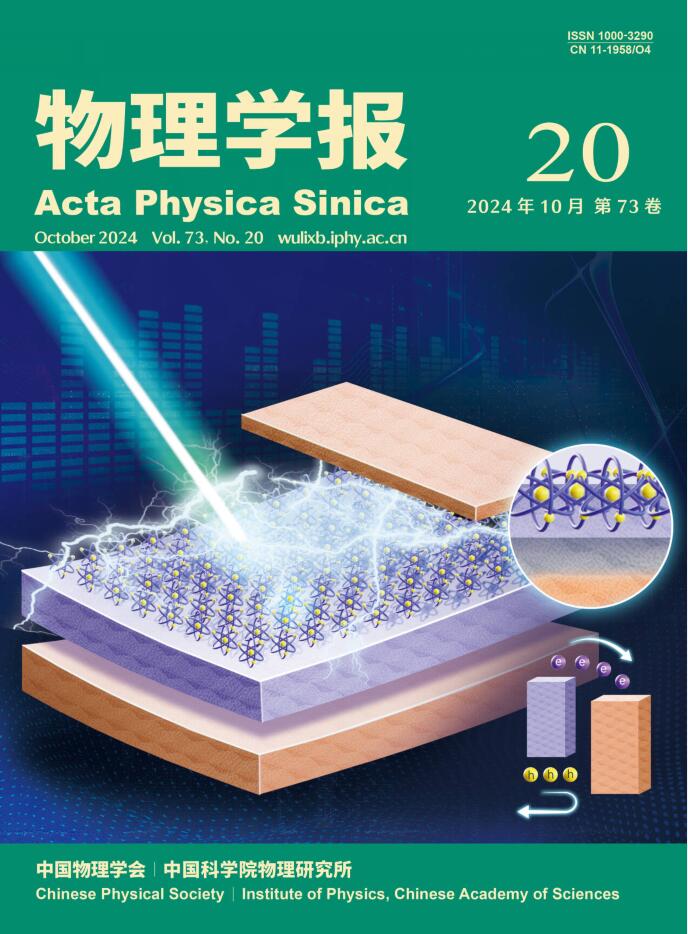Carrier Transport Model of Non-carrier-injection LED
IF 0.8
4区 物理与天体物理
Q3 PHYSICS, MULTIDISCIPLINARY
引用次数: 0
Abstract
Non-carrier-injection light-emitting diodes (NCI-LEDs) are expected to be widely used in next generation micro-display technologies, including Micro-LEDs and nano-pixel light-emitting displays due to their simple device structure. However, because there is no charge carrier injection from external electrodes, carrier transport behavior of the NCI-LED cannot be described by using the traditional PN junction and LED theory. Therefore, establishing a carrier-transport model for the NCI-LED is of great significance for understanding its working mechanism and for improving device performance. In this paper, carrier transport mathematical model of the NCI-LED is established and the mechanical behavior of charge-carrier transport is analyzed quantitatively. Based on the mathematical model, the working mechanism of the NCI-LED is explained, the carrier transport characteristics of the device are obtained. Additionally, the key features, including the length of the induced charge region, the forward biased voltage across the internal PN junction, and the reverse biased voltage across the internal PN junction are studied. Their relationships with the applied frequency of the applied driving voltage are revealed. It is found that both the forward and reverse biases of the internal PN junction increase with the driving frequency. When the driving frequency reaches a certain value, the forward and reverse bias of the PN junction would be maintained at a maximum value. Moreover, the length of the induced charge region decreases with the increase of the driving frequency, and when the frequency reaches a certain value, the induced charge region would always be in the state of exhaustion. According to the mathematical model, suggestions for the device optimization design are provided: (1) Reducing the doping concentration of the induced charge regions can effectively increase the voltage drop across the internal LED; (2) Employing the tunneling effect occurring in the reverse-biased PN junction can effectively improve the electroluminescence intensity; (3) Using square-wave driving voltage can obtain a larger voltage drop across the internal LED and increase the electroluminescence intensity. This work on the carrier transport model is expected to provide a clear physical image for understanding the working mechanism of NCI-LED, and to provide a theoretical guidance for optimizing the device structure.非载流子注入LED的载流子输运模型
非载流子注入发光二极管(nci - led)由于其器件结构简单,有望在micro- led和纳米像素发光显示器等下一代微显示技术中得到广泛应用。然而,由于外部电极没有电荷载流子注入,NCI-LED的载流子输运行为无法用传统的PN结和LED理论来描述。因此,建立NCI-LED的载流子传输模型对于理解其工作机制和提高器件性能具有重要意义。本文建立了nci led的载流子输运数学模型,定量分析了载流子输运的力学行为。基于数学模型,解释了NCI-LED的工作机理,得到了该器件的载流子输运特性。此外,还研究了诱导电荷区长度、内PN结正向偏置电压和内PN结反向偏置电压等关键特性。揭示了它们与外加驱动电压的外加频率之间的关系。结果表明,内PN结的正向和反向偏置随驱动频率的增加而增大。当驱动频率达到一定值时,PN结的正向偏置和反向偏置将保持在最大值。诱导电荷区长度随驱动频率的增加而减小,当驱动频率达到一定值时,诱导电荷区始终处于耗尽状态。根据数学模型,对器件优化设计提出了建议:(1)降低诱导电荷区的掺杂浓度,可以有效提高LED内部的电压降;(2)利用反向偏置PN结的隧穿效应可以有效提高电致发光强度;(3)采用方波驱动电压可以在LED内部获得较大的压降,提高电致发光强度。本文对载流子输运模型的研究有望为理解NCI-LED的工作机制提供清晰的物理图像,并为优化器件结构提供理论指导。
本文章由计算机程序翻译,如有差异,请以英文原文为准。
求助全文
约1分钟内获得全文
求助全文
来源期刊

物理学报
物理-物理:综合
CiteScore
1.70
自引率
30.00%
发文量
31245
审稿时长
1.9 months
期刊介绍:
Acta Physica Sinica (Acta Phys. Sin.) is supervised by Chinese Academy of Sciences and sponsored by Chinese Physical Society and Institute of Physics, Chinese Academy of Sciences. Published by Chinese Physical Society and launched in 1933, it is a semimonthly journal with about 40 articles per issue.
It publishes original and top quality research papers, rapid communications and reviews in all branches of physics in Chinese. Acta Phys. Sin. enjoys high reputation among Chinese physics journals and plays a key role in bridging China and rest of the world in physics research. Specific areas of interest include: Condensed matter and materials physics; Atomic, molecular, and optical physics; Statistical, nonlinear, and soft matter physics; Plasma physics; Interdisciplinary physics.
 求助内容:
求助内容: 应助结果提醒方式:
应助结果提醒方式:


